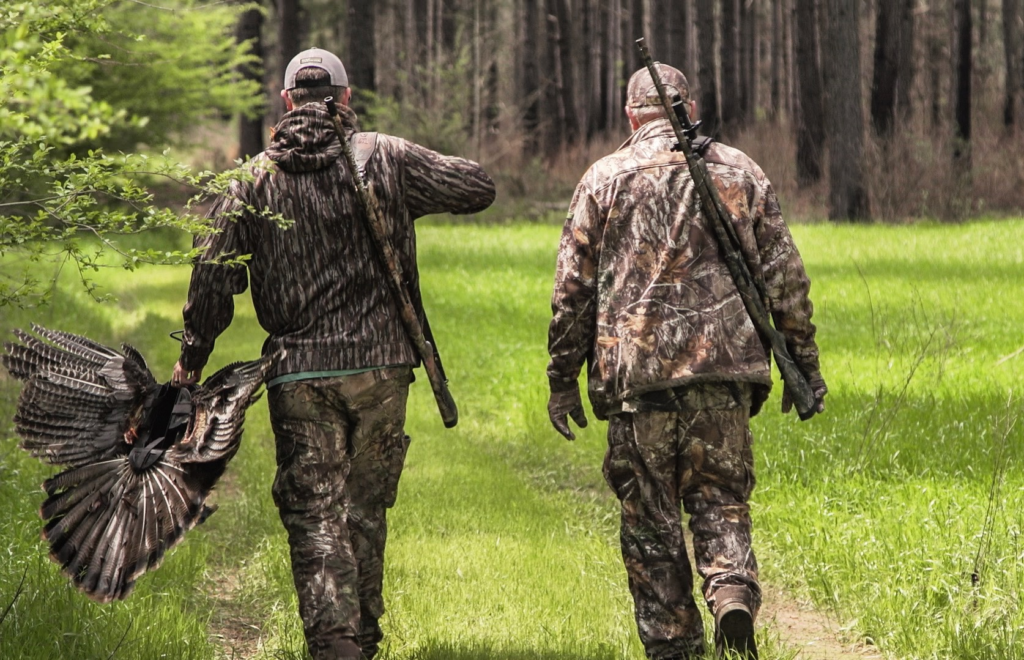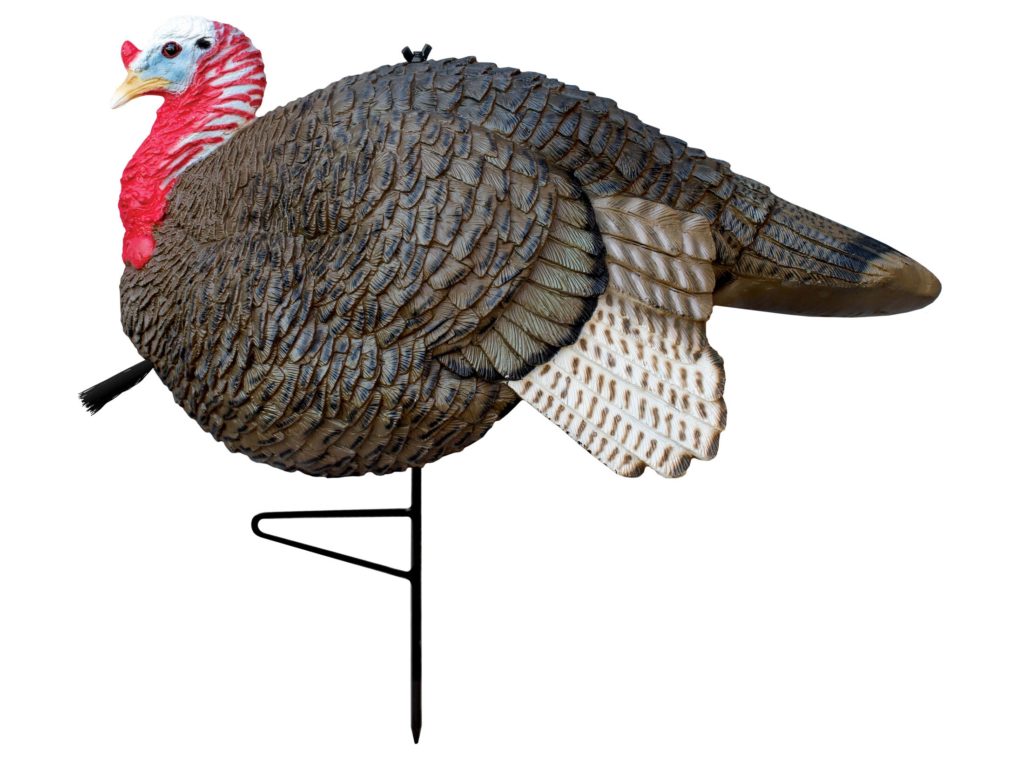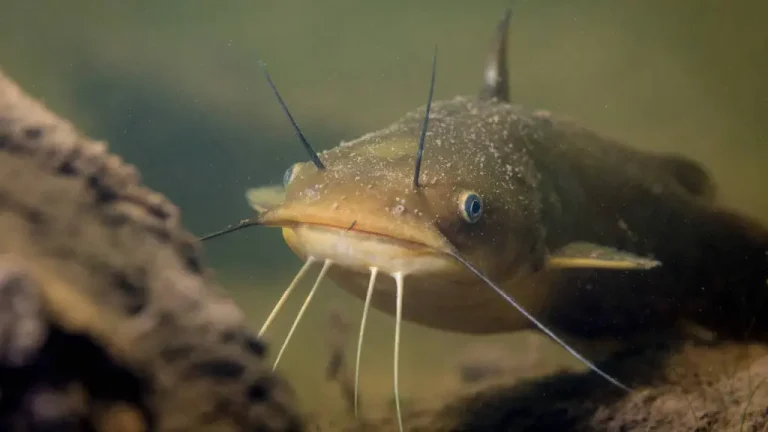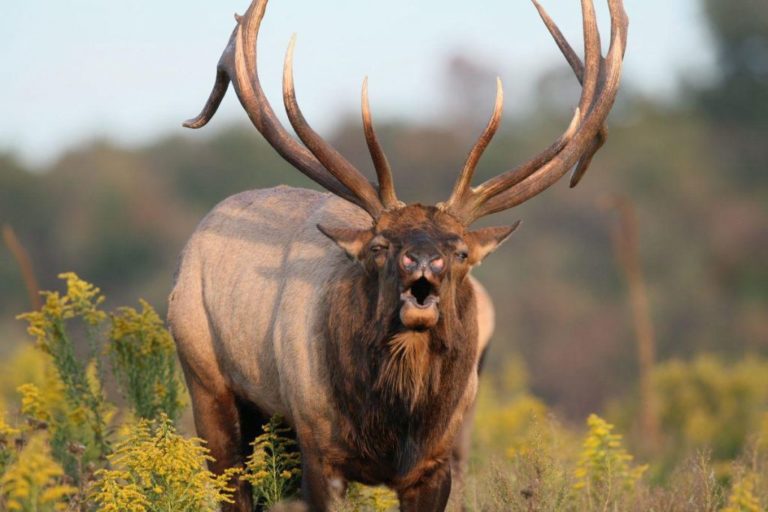
Introduction
Turkey hunting is a thrilling and challenging outdoor pursuit that has captivated the hearts of hunters for generations. The rush of calling in a majestic tom turkey, the precision required for a clean shot, and the beauty of the natural surroundings all contribute to the allure of turkey hunting. In this comprehensive guide, we’ll delve into the world of turkey hunting, covering everything from understanding the wild turkey’s behavior and habitat to essential gear, hunting techniques, safety considerations, and even the ethics of hunting these magnificent birds.
Understanding Wild Turkeys
- Species and Behavior: There are two main species of wild turkeys in North America: the Eastern wild turkey and the Rio Grande wild turkey. Understanding their behaviors, including mating habits, feeding patterns, and roosting sites, is crucial for successful hunting.

- Turkey Anatomy: A hunter should familiarize themselves with the turkey’s anatomy, particularly the vital areas where a shot should be placed for a humane and efficient harvest.
- Habitat and Range: Turkeys thrive in diverse habitats, including forests, fields, and wetlands. Knowing where to find them in your region is essential. Their range varies across North America, so research is key.
Essential Gear
- Shotgun Selection: A shotgun is the primary tool for turkey hunting. Choose one with a tight choke and the ability to handle turkey-specific loads, like 12 or 20-gauge shotguns.
- Ammunition: Turkey-specific shotgun shells are essential for accurate and ethical hunting. These loads are designed for tight patterns at extended ranges. You can also check on .270 vs .308 Winchesters – Which is More Powerful? to get some insights on ammunition for your other hunting activities too!

- Calls: Calls are vital for attracting turkeys. Box calls, slate calls, diaphragm calls, and locator calls each have their uses. Learning to mimic turkey vocalizations is crucial.
- Camo Clothing: Blend into your surroundings with effective camouflage clothing. A turkey’s keen eyesight can detect even slight movements.
- Decoys: Realistic turkey decoys can help lure birds within range. Set up decoys strategically to mimic a natural scene.
- Not sure who needs this but if you ever think of hunting turkey with a slingshot, we’ve got you, you can read Ultimate FAQ and Guide on Best Hunting Slingshots, one of our most comprehensive article on a hunting gear!
Hunting Techniques
- Scouting: Successful turkey hunting often begins with scouting. Look for signs like tracks, droppings, feathers, and scratching in the earth. Finding roosting and feeding areas is key.
- Blind Setup: Consider using a ground blind to conceal your movements and provide better cover. Make sure your blind is well-camouflaged and set up in advance to minimize disturbance.

- Calling Strategies: Different calls serve various purposes during the hunt. Start with locator calls to locate birds, then use hen calls to draw them in. Gobbler calls can be used for convincing the tom to approach.
- Patience and Stealth: Turkeys have sharp senses, especially vision. Remaining still and being patient are vital. Move only when the turkey is behind cover or out of sight.
- Hunting Seasons: Be aware of local hunting regulations and seasons. Different areas may have specific rules for turkey hunting, including bag limits and restrictions on hunting methods.
- Decoy Movement: Adding motion to your decoys can make your setup even more convincing. Some decoys come with built-in movement features, while others can be rigged with string or motorized systems.

- Weather Considerations: Turkeys can be more or less active depending on the weather. Rain can make them more vocal and active on the ground, while high winds can make calling less effective.
- Turkey Behavior Patterns: Understanding the daily and seasonal behavior patterns of turkeys can be a game-changer. Learn when they feed, roost, and strut to increase your chances of success.
- Stalking: If calling doesn’t work, consider stalking turkeys. Move slowly and cautiously toward the birds while using terrain and vegetation for cover. This method can be highly effective but requires exceptional stealth.
Ethical Hunting and Conservation
- Respect the Bird: Ethical turkey hunting involves quick, humane kills. Practice shooting accuracy to ensure a clean harvest.
- Leave No Trace: Follow Leave No Trace principles by packing out all trash and minimizing your impact on the environment.
- Conservation Efforts: Support turkey conservation efforts by contributing to organizations like the National Wild Turkey Federation (NWTF), which work to conserve turkey habitat and promote responsible hunting.
Safety Considerations
- Identifying Targets: Always positively identify your target before taking a shot. Be sure you are aiming at a legal turkey and not another hunter.
- Orange Safety Gear: Wear hunter orange clothing when moving to and from your hunting spot to be visible to other hunters.
- Knowing Your Surroundings: Familiarize yourself with the hunting area, including landmarks, property boundaries, and any potential hazards.
Conclusion
Turkey hunting is a rich and rewarding pursuit that requires a combination of skills, knowledge, and respect for nature. With the right gear, understanding of turkey behavior, and ethical hunting practices, you can experience the thrill of the hunt while contributing to turkey conservation efforts. For more information, you could also check on Turkey Hunting 101 – The National Wild Turkey Federation (nwtf.org)!
Remember that safety should always be a top priority, and ethical conduct is key to preserving the sport for future generations of hunters.
So, gear up, study the turkeys, and embrace the adventure of turkey hunting. Be sure to also check on Pheasant Hunting Tips for Beginners if you hunt a variety of birds too!






